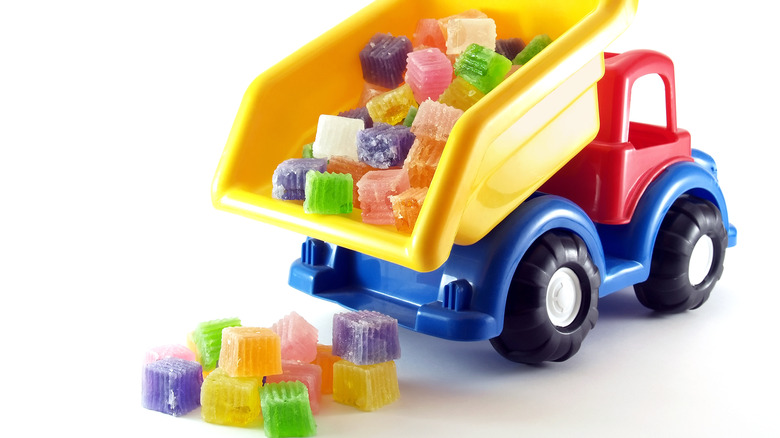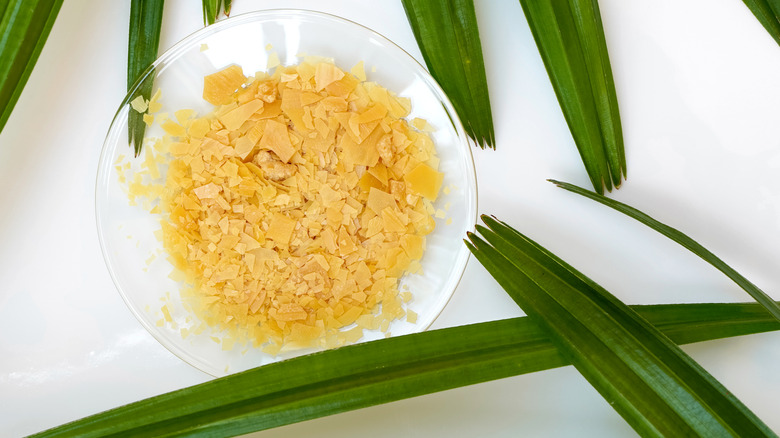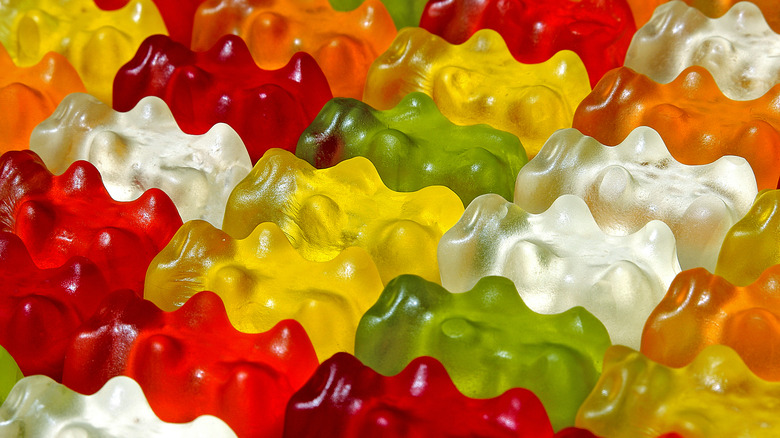The Ingredient That Makes Gummy Candy Shiny Is Also Found In Car Wax
Believe it or not, you can easily make your own gummy candies at home, but there's still something about store-bought gummies that just hits different. Maybe there's more than meets the eye regarding such candies, but then again, perhaps it truly is just the look of these things. After all, who doesn't love the way gummy candies shine under the bright lights of a well lit candy shop? Indeed, appearances have been behind the success of the modern gummy for over a century now.
Gummy candies mostly consist of colorants, flavorings, gelatin, sweeteners, and water, as well as ingredients mainly included for sheen. The roles of colorants, flavorings, and sweeteners are self-evident, and it's not hard to guess that gelatin mixed with water is what gives gummies their squishy form. Less obvious, however, is the identity of the shine-enhancing agent. Some recipes use beeswax, concentrates, or glazes, but there's one other common ingredient that, surprisingly, is also often found in car wax.
Carnauba wax is in all sorts of things
Carnauba wax, also used as a car polish, is regularly added to gummy candies during the filling stage of production, when the ingredients are poured into tray molds. This material — also known as Brazil wax or ceara wax — naturally comes from the carnauba palm tree's fronds. The stuff is notably tough and doesn't melt easily, making it ideal for all sorts of products. It's a vegan polish for food, yes, but it's also used in cosmetics, leathers, furniture, medicinal pills, oil thickeners, printing inks, and shoe polish. This stuff is so useful that its parent plant has been nicknamed the "tree of life."
The tree itself unsurprisingly hails from Brazil, but more specifically, the savannas in that country's northeastern regions. In order to retain moisture during the dry seasons, it coats its fronds in wax, which can then be harvested by cutting, drying, melting, straining, and cooling the leaves into a brownish green or yellow substance. (Other parts of the palm tree can also be eaten as fruits and veggies or incorporated into coffees, gums, and oils.) While its association with cars may already be enough to turn you off from carnauba wax, there's another side to this product that's even shadier.
Haribo gummy bears recently came under fire
One of the biggest names in the gummy candy business is, obviously, Haribo. Hans Riegel revolutionized the industry in the 1920s by using gelatin to create bear-shaped gummies. During the 1960s, those bears spread across Europe, and then, in the '80s, they traveled overseas to catch on in the United States. The following decades saw other American companies try to replicate Haribo's success, and now, we have a whole gummy category available at stores.
Haribo continues to thrive, but that doesn't mean it's always applauded. For instance, in 2022, a man received only candy for finding Haribo's $4.8 million check, leading many to criticize the company for stinginess. That's not the worst of things, either.
Back in 2017, Haribo was accused in a documentary of using enslaved people in its sourcing of carnauba wax (via Deutsche Welle). Brazil's northeastern states, where carnauba palm trees grow, are some of the poorest in the nation, and according to that documentary, the plantations providing wax to Haribo took advantage of those economic conditions; workers were paid just $12 for a whole day's work and were provided with little to no shelter to sleep in at night, while also lacking access to clean water and restrooms. Allegedly, some laborers were even underaged.
Sadly, all that glitters is not gold, even when it comes to shiny gummy candies.


